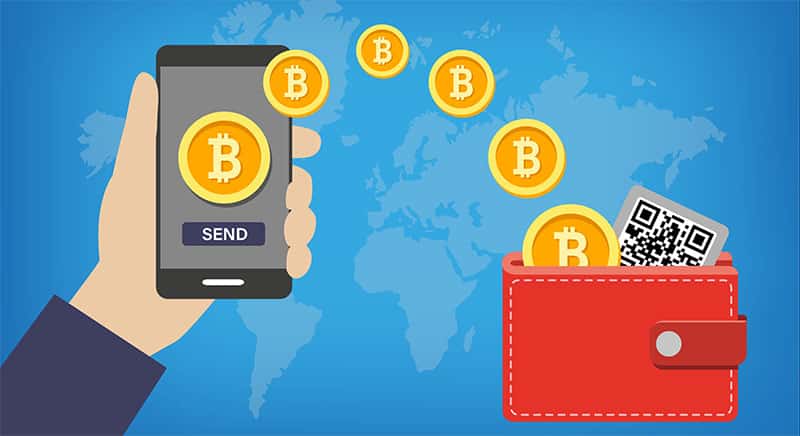Cryptocurrency
NFTs are multi-use images that are stored on a blockchain. They can be used as art, a way to share QR codes, ticketing and many more things. The first breakout use was for art, with projects like CryptoPunks and Bored Ape Yacht Club gaining large followings. https://iowasportsguys.com/ We also list all of the top NFT collections available, including the related NFT coins and tokens.. We collect latest sale and transaction data, plus upcoming NFT collection launches onchain. NFTs are a new and innovative part of the crypto ecosystem that have the potential to change and update many business models for the Web 3 world.
The 2024 elections in the US, Asia, Europe and Africa are poised to influence the global regulatory framework for Bitcoin and crypto. Follow CoinDesk for essential updates and expert analysis to see what’s at stake.
In basic terms, cryptocurrency is digital money. This kind of currency is designed to work through an online network without a central authority — meaning it’s typically not backed by any government or banking institution — and transactions get recorded with technology called a blockchain.
“As proven at trial, Roman Sterlingov created and used an online tool to process hundreds of millions in illegal transactions, enabling darknet drug dealers and those who sell child sexual abuse material, to operate,” said U.S. Attorney Matthew M. Graves for the District of Columbia. “Today’s sentence sends an unmistakable message: those who help criminals with online payments for their illegal activities will face serious penalties. This prosecution also provides more proof that we have the skilled investigators and talented prosecutors needed to hold those who operate these darknet sites accountable.”

Cryptocurrency market
Daarom is het belangrijk om volledig gebruik te maken van alle geboden beveiligingstools van de beurs of web wallet aanbieder — waaronder tweeledige of meervoudige verificatie voor inloggen, toegangsbeheer voor saldo opnemen en anti-phishingstools.
Bitcoin’s total supply is limited by its software and will never exceed 21,000,000 coins. New coins are created during the process known as “mining”: as transactions are relayed across the network, they get picked up by miners and packaged into blocks, which are in turn protected by complex cryptographic calculations.
Bovendien lopen gebruikers het risico dat wanneer ze proberen om een deel van het saldo van een papieren wallet over te maken, het resterende saldo automatisch wordt verstuurd naar een “wijzigingsadres” op het Bitcoin-protocol. Het saldo blijft niet in de oorspronkelijke papieren wallet — een misverstand waardoor gebruikers het risico lopen om hun saldo te verliezen als ze er niet voor zorgen dat een nieuwe papieren wallet wordt opgegeven voor het resterende bedrag.
Sommige hardware wallets kunnen ook worden verbonden met gedecentraliseerde beurzen of web wallets, waardoor gebruikers het probleem van toegankelijkheid en het gebrek aan integratie met handelsfuncties kunnen oplossen.
Bitcoin (BTC) is een peer-to-peer elektronisch geldsysteem waarvoor geen tussenpersoon nodig is, waardoor transacties direct grenzen kunnen passeren. Voor het versturen van bitcoin, moeten gebruikers de basisinfrastructuur voor bitcointransacties begrijpen.
Cryptocurrency wallets
So, the term ‘wallet’ is somewhat of a misnomer, as crypto wallets don’t actually store cryptocurrency in the same way physical wallets hold cash. Instead, they read the public ledger to show the balances in a user’s addresses, as well as hold the private keys that enable the user to make transactions.
It is important to remember that cryptocurrency transactions do not represent a ‘sending’ of crypto tokens from a person’s mobile phone to someone else’s mobile phone. When sending tokens, a user’s private key signs the transaction and broadcasts it to the blockchain network. The network then includes the transaction to reflect the updated balance in both the sender’s and recipient’s address.
Crypto exchanges and custodial wallet providers usually also take further steps to ensure the safety of users’ tokens. For example, a portion of the funds is generally transferred to the company’s cold wallet, safe from online attackers.
A paper wallet is a physical location where the private and public keys are written down or printed. In many ways, this is safer than keeping funds in a hot wallet, since remote hackers have no way of accessing these keys, which are kept safe from phishing attacks. On the other hand, it opens up the potential risk of the piece of paper getting destroyed or lost, which may result in irrecoverable funds.

So, the term ‘wallet’ is somewhat of a misnomer, as crypto wallets don’t actually store cryptocurrency in the same way physical wallets hold cash. Instead, they read the public ledger to show the balances in a user’s addresses, as well as hold the private keys that enable the user to make transactions.
It is important to remember that cryptocurrency transactions do not represent a ‘sending’ of crypto tokens from a person’s mobile phone to someone else’s mobile phone. When sending tokens, a user’s private key signs the transaction and broadcasts it to the blockchain network. The network then includes the transaction to reflect the updated balance in both the sender’s and recipient’s address.
China cryptocurrency
That Executive Order commits the White House to taking part in research on cryptocurrencies and to engaging departments across the government to collaborate in the creation of a regulatory framework for digital assets. It also outlines a “whole-of-government approach to addressing the risks and harnessing the potential benefits of digital assets and their underlying technology.”
The world first moved to paper money from gold and silver more than 1,000 years ago during China’s Song Dynasty. The next revolution – from paper money to digital currency – could happen in China as well, realizing the nation’s critical goals but with complex implications for global trade and economic order.
As the global reserve currency, one of the many reasons the US economy remains competitive is the dollar’s dominant role in global trade. Around $10 trillion is floating around outside the US, and despite the immense national debt, the dollar remains solid for now.
The One Belt One Road initiative could allow China to control the artery of trade in global emerging markets, where most growth will take place in the coming decades. If the PBOC issues its own cryptocurrency and uses it to replace the dollar for trade along the belt and road, it could challenge the dollar’s dominance and offer optionality to these countries. A considerable portion of the belt and road trade and investments are being carried out by Chinese state-owned enterprises with a political mandate. This could make the implementation of a PBOC-backed cryptocurrency more efficient. Such a digitally controlled approach could allow China to strike a balance between capital control and RMB internationalization that wasn’t possible before.
Our research aimed to project the economic outcomes of crypto and stablecoins, given the various high-level regulatory paths it could take. We sought to arm policymakers and business leaders with the necessary projections to inform decision-making in these dynamic spaces.